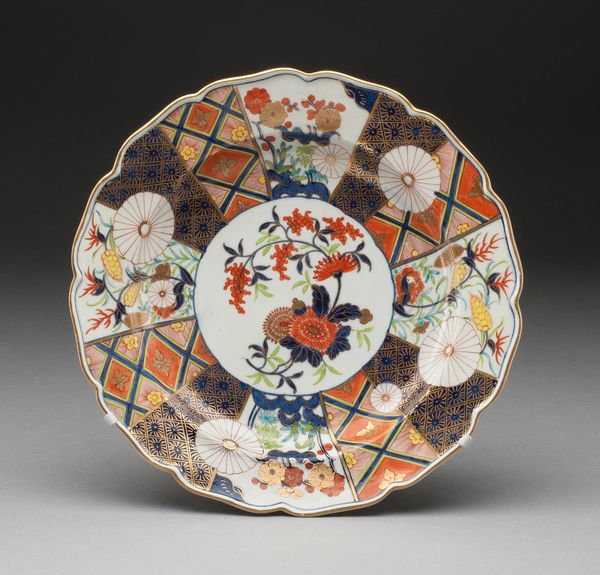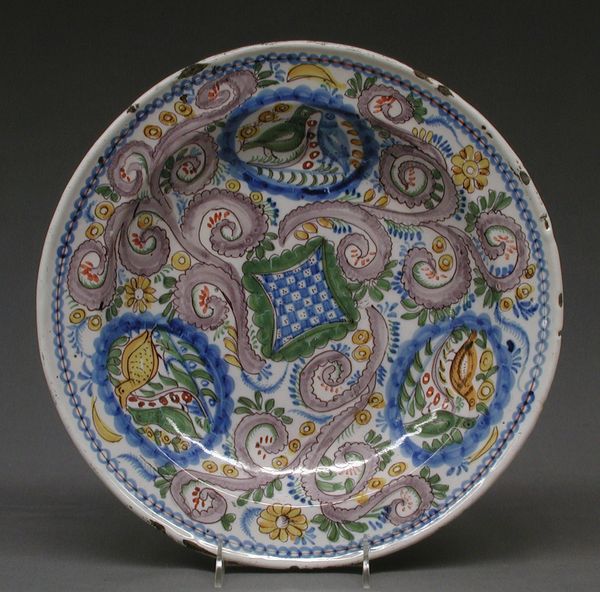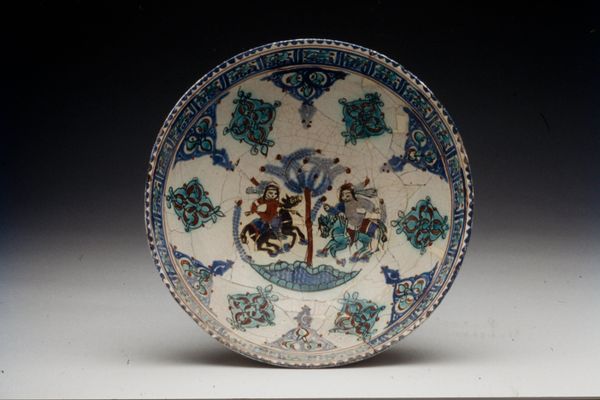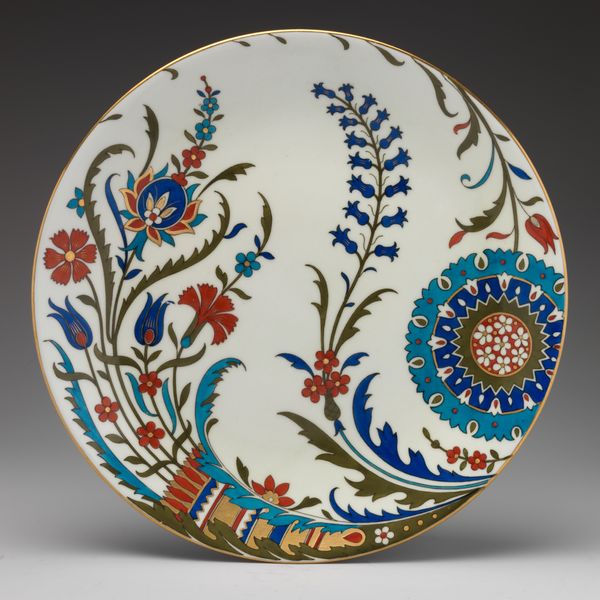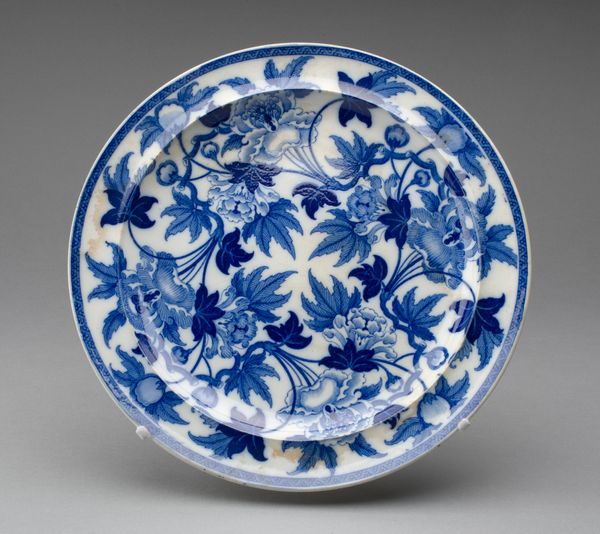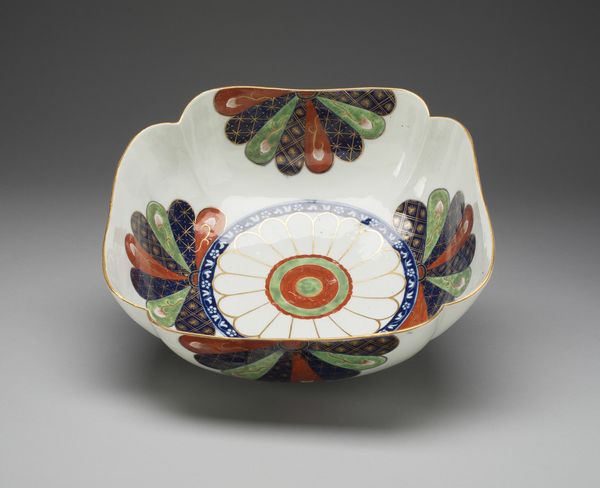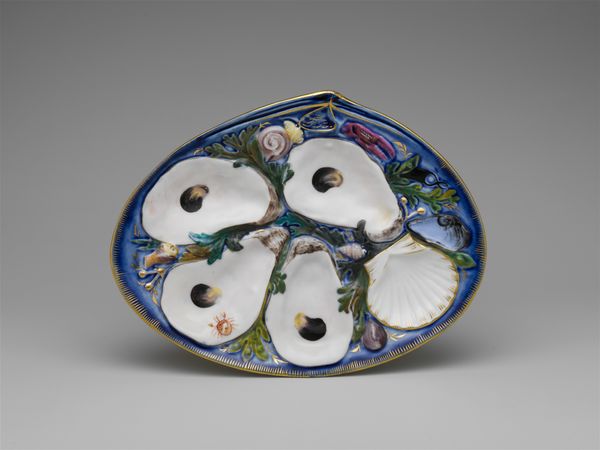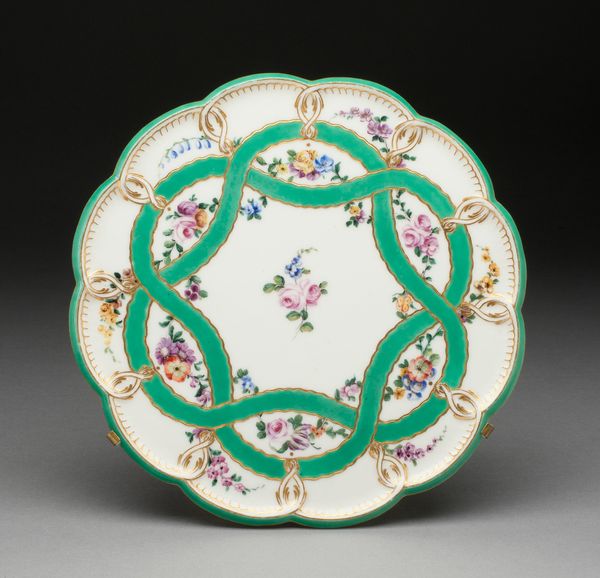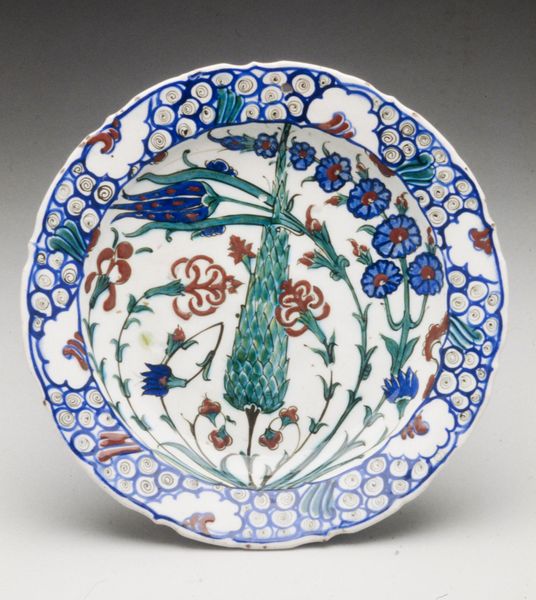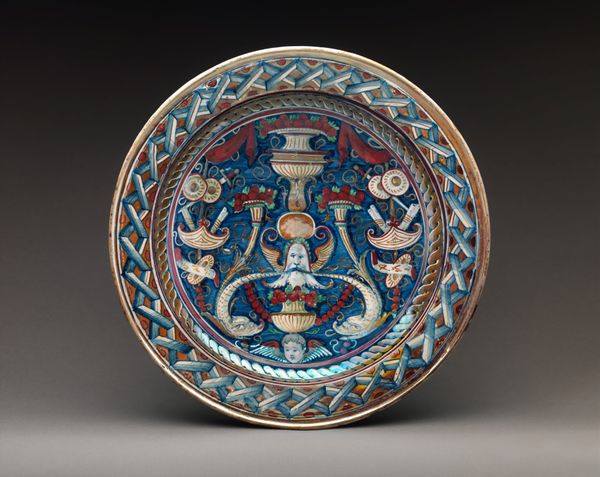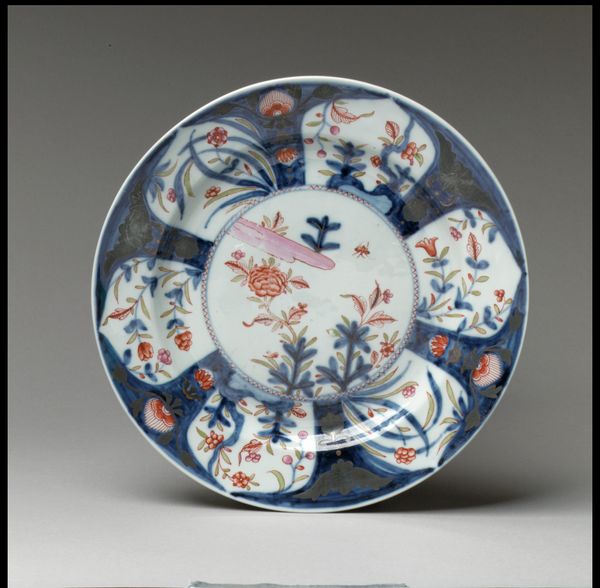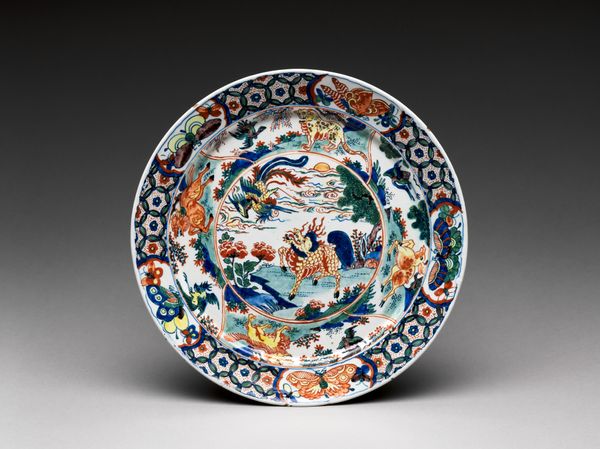
ceramic, earthenware
#
ceramic
#
earthenware
#
ceramic
#
islamic-art
#
decorative-art
Dimensions: Diameter: 23.6 cm (9 5/16 in.)
Copyright: Public Domain
Curator: Right now, we’re looking at an earthenware plate, believed to have been created sometime between 1700 and 1725. Editor: It’s got this cheerful folk-art vibe, doesn’t it? Bold greens and blues… a little rough around the edges, literally! There's a lot of obvious wear. It's like looking at a sun-faded memory of a garden party. Curator: Indeed! These pieces weren’t always displayed so reverently. They were utilitarian, everyday objects. Its survival gives a hint of the social dynamics of that period. Were these floral motifs a way of bringing nature into urban lives? What was served on such a plate? Editor: Hmmm... small cakes with candied flowers, perhaps? Something that mirrored the plate's delicate details. And speaking of detail, it’s charming how each little flower and sprig seems to have its own personality, like characters in a miniature play. Curator: Precisely! The stylized floral designs show a relationship to Islamic artistic traditions as well. Were they traded items, symbols of social standing, cultural pride? It’s that historical interplay that always grabs me. The visual cues hint at such layers of cultural influence. Editor: I'm intrigued by that! It definitely shifts how I see it – makes you think about trade routes, cross-cultural pollination… almost makes the imperfections more beautiful, doesn't it? Each crack whispers a story. Curator: Exactly! They highlight how material objects reflect the cultural exchanges that shaped both design aesthetics and social norms. Editor: I'll definitely look at my dinnerware differently tonight! It’s wild to think such simple designs were once these tangible links in something much larger. Curator: They encourage us to see that even ordinary household objects are historical witnesses, constantly reflecting how we organize culture.
Comments
No comments
Be the first to comment and join the conversation on the ultimate creative platform.
